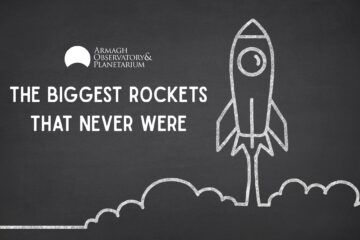Once upon a time rockets were exciting symbols of a glorious and exciting future when everyone would get their chance to have a holiday on the Moon. Well the future is now and the lunar resorts are still not here. Launch vehicles are another dull but necessary piece of civilisation’s infrastructure like power stations, microchip factories and recycling plants. But there are still odd souls who are fascinated by these amazing machines. If you are still a space cadet, this month’s selected image is for you!
This is a recent (November 2011) NASA diagram summing up the past, present and future (plus a might have been) of US rocketry. The rockets are arranged from left to right in order of size. There is a scale in feet running up the side.
From left to right: XCOR Lynx (commercial sub-orbital space tourism rocketplane, yet to fly), Masten XA-1.0 (commercial sub-orbital VTOL rocket, yet to fly), RBX Pathfinder (test vehicle for USAF’s Reusable Booster System, yet to fly), Max Launch Abort System for Orion capsule (an odd thing to include here), Orbital AA-2 ( a mockup Orion capsule on a Peacekeeper missile stage, again to test the Launch Abort System), Orbital Minotaur IV and V (launch vehicles based on redundant Peacekeeper ICBMs, in service), Athena IIIC (commercial launch vehicle, hypothetical), Orbital Taurus I and II (commercial launch vehicles, in service), SpaceX Falcon 9 and 9Heavy (Falcon 9 is a commercial launch vehicle under development, the Heavy variant would rival the 1960s Saturn 1B if built), then there are the current main US space launchers, Atlas V (used to launch interplanetary probes such as MAVEN and Curiosity and well as the USAF’s X-37), Delta IV M and IVH (currently the most powerful launch vehicle in service and used to launch the Orion spacecraft on its first flight).
It is towards the larger end we find the most familiar vehicles in the shapes of the Shuttle (NASA’s recently retired Space Transportation System) and Saturn 5 (still the most capable US launch vehicle to actually fly). To their right are three behemoths, there is a Nova (a unbuilt 1960s concept designed to among other missions land a three man craft on the Moon) flanked by the planned Space Launch System (SLS) in its initial (701)and titanic final (1301) variants.
(Article by Colin Johnston, Science Education Director, diagram from the Unwanted Blog)




3 Comments
CST-100: Everything you need to know | Astronotes · June 9, 2015 at 14:00
[…] the production timescale, and also by implication therefore, the cost. Although due to launch on an Atlas V rocket, the forward-thinking design team are keen to make the vehicle as flexible as possible, and […]
No, NASA has not verified an impossible space drive | Astronotes · August 12, 2014 at 09:40
[…] mass at launch is propellant, only 10% structure and payload. This is a sad fact, meaning rockets to send missions into to space must always be behemoths, suggesting space travel will forever be difficult and expensive. What if […]
Dennis Tito’s Mars Mission: Possible but Pointless | Astronotes · October 15, 2013 at 03:25
[…] day mission would set off in January 2018 using a modified SpaceX Dragon spacecraft launched by a Falcon Heavy rocket (also from SpaceX). This will be no joy-ride, the crew’s comfort would be “limited […]